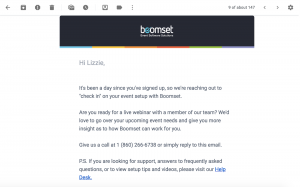As someone who has always been on the agency side of things, I am used to the pushback against Display advertising in Google. The number one reason I hear why clients do not want to use them is that they typically do not perform as well as Search. Of course they do not. The user intent between the networks is completely different.
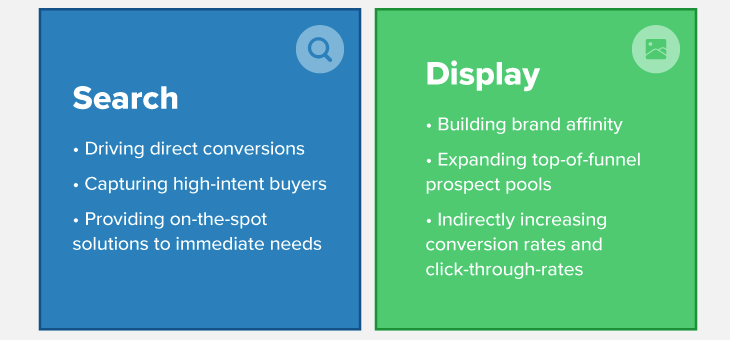
But just because users are not as likely to convert, it does not mean Display ads are invaluable. There are several ways you can check and see if Display Ads are impacting overall performance on Google, and we’ll be covering four of those methods in this post. The methods involve:
- Display-specific Google Analytics audiences
- Observation audiences
- Google Trends
- View-through conversions
Let’s begin.
1. Create display-specific Google Analytics audiences
When you are in Google Analytics, click on the Admin button in the lower right-hand corner of your window. The middle column will be your Property column in Universal Analytics. Click on Audience Definitions towards the bottom of the middle column.
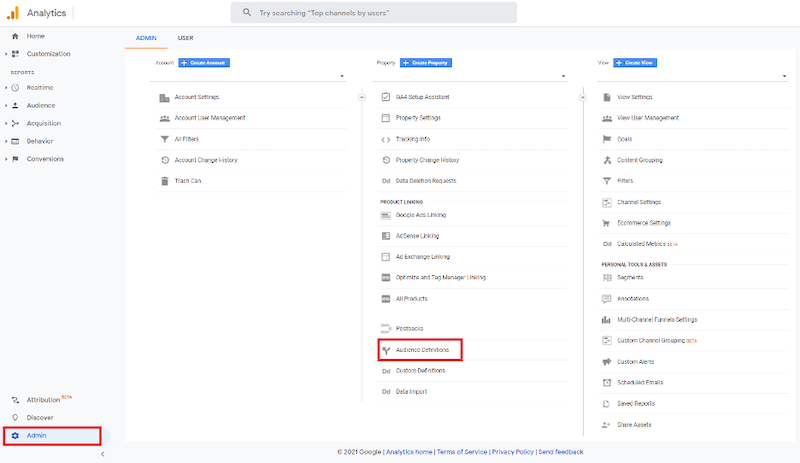
In Audience Definitions, we can create audiences from so many metrics available within Google Analytics. Before you can create an audience in Google Analytics, however, you must have Edit permissions to the property. Click on the red “New Audience” button, and soon you will find yourself in the Audience Builder. With the Audience Builder, and how you have your Display campaigns set up in Google Ads, there could be a variety of ways to build audiences from Display Network traffic. I always have “Display” in my Display campaign names so I can create a Traffic Source audience to include any visits from users who came to my site via a campaign with “Display” in the name.
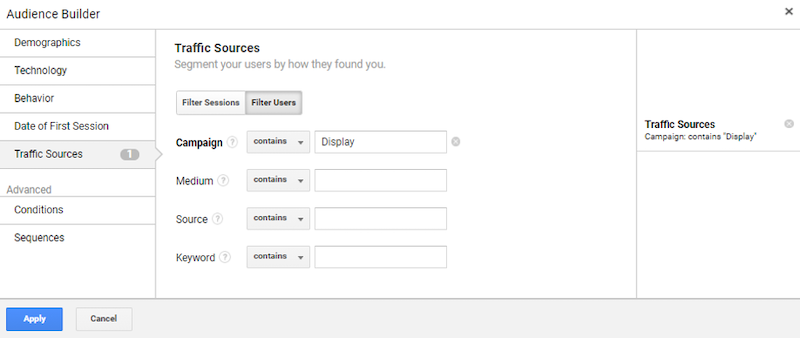
If you manually tag your Display URLs with a specific source and medium, you can create an audience that way. If you use specific landing pages for your Display campaigns, you can create an audience in Google Analytics from just those landing page visits. There are a variety of ways you can do this. I just wanted to make it clear we can build audiences from our Display traffic in a variety of ways.
Now before you save the audience, you will want to make sure you are adding the audience to both Google Ads and Google Analytics. And this is a trick I learned a long time ago from Amy Bishop. I wanted to make sure she got credit for teaching me this.
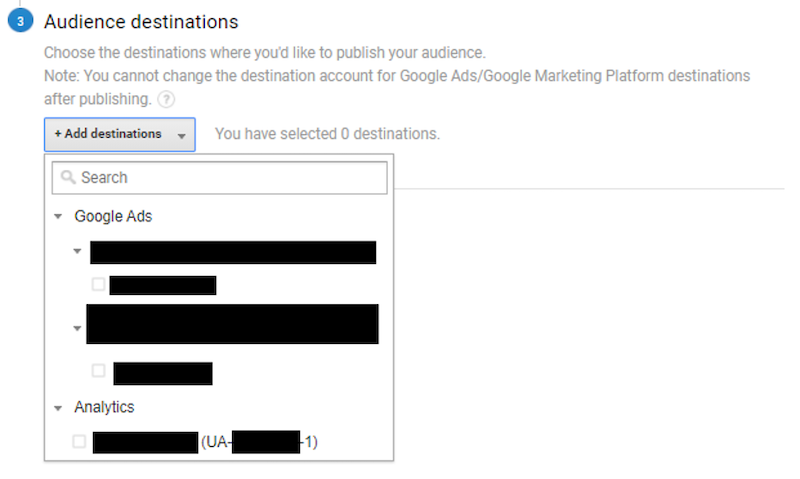
The reason we want to make sure our audience is added to Google Analytics is because we can review the performance of this audience within the Google Analytics Audience report. In Google Analytics, go to the left-hand column and click “Audiences.” Then click on the subcategory which is a second “Audiences.”
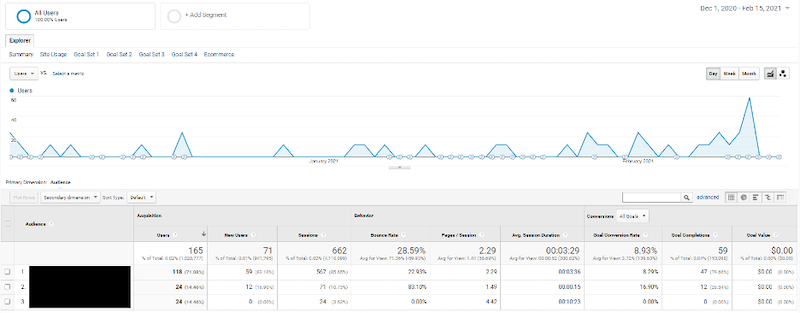
In this report, you will be able to see if anyone within your audiences has converted within your selected date range. So when we create an audience from Display campaigns, we can then go back and see if anyone who came to the website eventually converted. The numbers I see from Google Analytics audiences and direct conversions from Display campaigns in Google Ads are typically different. The difference I usually experience is that the numbers in Google Analytics are higher because Display is more of a first interaction approach unless you are doing remarketing. This has helped me showcase to clients when users were not converting from my Display campaigns, that those users were eventually coming back to the site via many of our other channels and converting. This helped prove the impact of using Display to build the initial brand or product awareness.
Note: You can create this type of audience in Google Analytics 4 as well, but I wanted to stick with the more familiar Universal Analytics way of doing it for this post.
2. Apply those audiences in observation mode
After you have your audiences created in Google Analytics (if you created them using the Google Ads audience manager, that is completely fine too), I highly recommend adding each of these audiences as an Observation audience to all of your Search Network campaigns. Observation audiences are bid-only audiences in Google Ads. We are not specifically targeting users within our Display audiences we just created. We just want to observe how users within this Display audience come back and interact with our Google Ads campaigns.
When you are in Audience Manager in Google Ads, you can select your Display audiences you just created. Once you click on the checkbox next to your audience, a blue bar will pop up on the screen. You can then choose to add that audience to as many ad groups or campaigns as you would like. Of course, I am going to recommend adding them to all of your campaigns because who does not want more information?
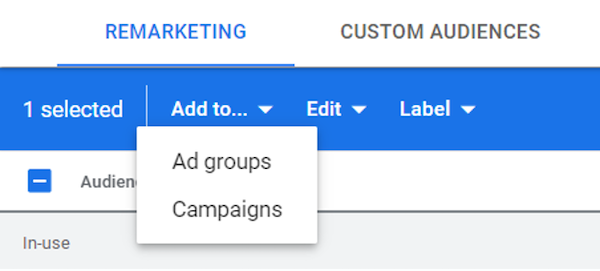
Now what we are doing is essentially creating Observation RLSA campaigns. While we are not targeting users in these audiences, the RLSA audience rules still apply to the Search campaigns. This means your audience needs to have at least 1,000 cookies within that audience before we can start seeing the data show up in the Google Ads Audience report. But if you do have enough data, you can start seeing how your Display audiences are performing compared to the account averages or other audiences in the account.

The biggest grain of salt when reviewing RLSA audiences as a success metric is that we are only seeing if users within your Display audience come back and interact with your other Google Ads campaigns. And those campaigns have to be enabled for us to gather the Observation information. This tactic is helpful from the impact on your paid search campaigns, but it will not help prove the impact on other search sources. Maybe users went back to your site through organic search. Maybe they came back to your site via a Microsoft Ads search campaign. We do not get the full picture using Observation audiences, but it can give you additional information on what users are searching for after interacting with your Display ads.
3. Monitor Google trends to see if volume changes
Depending on the goals of the Display campaign, I like to monitor how search trends change after we launch the campaign. If we are launching an overall brand campaign, I am going to monitor the most important brand keywords to see if we see more searches across Google. If we are bidding on brand terms in Google or Microsoft, we will also monitor if impressions increased for those keywords.

If our Display campaign is focused on specific products or services, we will pull specific branded product keywords and see if we see any growth. In the case of brand new products with zero awareness, we will see if any searches start showing up. Now it is always important to keep in mind any other channels you may be using to build the awareness. If you are running Display with social campaigns, YouTube ads, direct mail, etc., it is pretty hard to prove that the impact on Search was from just Display. But if you are only running Display to build awareness, I would look for changes in the interest over time to see if search volumes changed in your favor.
4. Monitor Your View-Through Conversions
Now this tactic is not Search-specific, but it is one I monitor when I run any type of Display campaign. When you are reviewing your Display campaigns, you have the ability to adjust your columns in Google Ads. One column I always have selected for my Display campaigns is the View-through conversions column. You can find this option when in the Conversions section when modifying your column views.
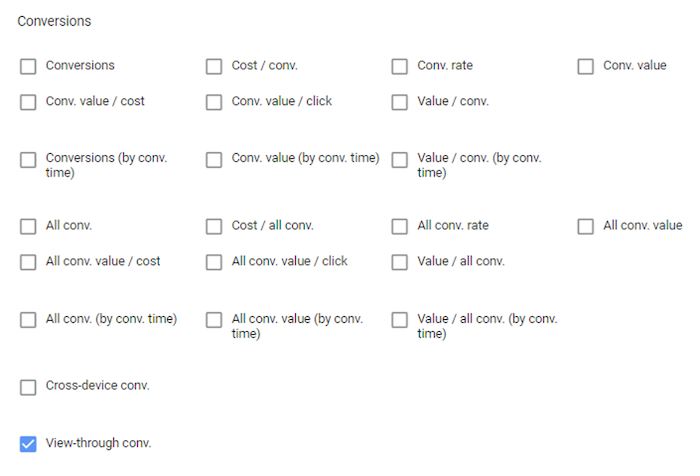
View-through conversions do not include any conversions from users who have interacted with your other ads. In other words, View-through conversions are not included in the regular Conversions column totals. These conversions occur when someone sees, but does not interact with your ad. And seeing the ad means at least 50% of the ad was visible on the user’s screen. So this action is very applicable to Display campaigns which can have a lower CTR compared to other paid media channels. People might see your Display ads, but they are not ready to click on it because they were on a particular website or app for different reasons.

We use view-through metrics to evaluate impressed-based impact on our Display campaigns. Then we like to go back to our assisted conversion metrics in Google Ads and see how these users are coming back and converting. In many cases, users are coming back via search (both paid and organic) to make the conversion. That is how we can really see the value of just having Display ads visible to a user.
See how your Display ads affect Search with these tips
Can Display campaigns in Google Ads convert? Yes. Absolutely. But even if your Display campaigns are not converting, you have to review the complete impact your Display efforts are having before turning them off. Take the ideas I laid out in this post and apply them to your account. Are users going back to Google and searching for your brand after seeing or clicking on your Display ad? There are several ways we can review this. Display is great for building the awareness to drive more Search traffic, and hopefully you can now see how that is possible.
Digital & Social Articles on Business 2 Community
(64)
Report Post

